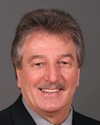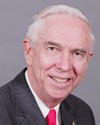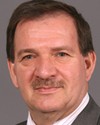Thank you, Mr. Chair, for inviting me to discuss chapter 5 of our October 2007 report, “Keeping the Border Open and Secure”, an audit of the Canada Border Services Agency.
With me today is Gordon Stock, principal of the public safety team responsible for this audit.
The Canada Border Services Agency has a wide-ranging mandate. Every year it allows 96 million people to enter Canada and it approves the entry of $404.5 billion worth of imported goods. Its 12,800 staff provide a full-time presence at 148 border points and a limited presence at a further 1,121 locations across Canada.
This was our first performance audit looking specifically at the agency since it was created in December 2003. As such, we examined those areas of the agency that focus on its expanded mandate. The areas included the border functions of three legacy organizations—customs from the former Canada Customs and Revenue Agency, immigration from Citizenship and Immigration, and animal and plant inspection from the Food Inspection Agency. Added to this was the agency's expanded mandate in national security.
This expanded mandate requires the agency to facilitate the flow of legitimate goods and people while also supporting national security and public safety priorities. We found that the agency and its predecessor organizations had been refining their risk management approach to border management for more than a decade, but they did not have an integrated risk management framework in place.
Border management can be characterized as a number of sequential layers of protective measures. However, without an integrated framework, a weakness that is encountered in one area is not recognized and mitigated through additional evidence in the next layer of protection. For example, we found that containers that were not scanned before they arrived at the port of entry were not subject to additional procedures or examination to bring down the risk to an acceptable level. The committee may wish to ask the agency about the progress it has made in its risk management approach to managing the Canadian border.
We found that the agency does not have a risk-based model to determine the resources required for all ports of entry and modes of travel. For example, the decision to choose people and goods for further examination upon arrival at a port of entry is based on an assessment of risk indicators by border services officers. However, the overall rate of examinations is based mainly on the capacity of personnel and availability of equipment.
We also found that the reason to refer individuals and shipments for further examination is not fully communicated to those officers doing the secondary examination, and results of the examination are not always documented. Without this information, the agency does not have the information it needs to determine whether it is appropriately matching the level of examination activity to the level of risk.
The agency now receives considerably more information on travellers and shipments in advance of their arrival than it did five years ago. It is one of the few border service agencies to use automatic risk scoring systems to analyze advance information and to target higher-risk people and goods for additional examination.
However, the agency has not systematically examined whether these tools have improved its ability to identify national security risks or prevent the entry of prohibited goods or people. We found that the border service officers perceived weaknesses with these systems and relied on more traditional examination methods. The agency recognizes these weaknesses in the new systems and is working to improve them.
In recent years, the agency has developed a number of pre-approval programs to speed the entry of lower-risk people and goods. The agency cannot currently prevent someone from enrolling in these programs when intelligence information suggests that a person poses a higher risk, but it may carry out additional monitoring. We found, however, that even with this monitoring, the agency did not have processes in place to ensure that net risk levels were reduced to low.
We found that the agency has successfully used specialized inspection equipment to make high-value seizures at ports of entry. However, we noted that the agency had not linked the use of this equipment to its assessment of risk. Further, not all individuals and shipments that were identified as high risk—and referred for further examination—were actually examined at ports of entry, and explanations for not performing additional examinations were not documented.
From our work, there are three overriding factors that we would like to bring to the committee's attention. Together, these factors would allow the agency to respond quickly to a changing risk environment.
I have already mentioned the first factor, the need for a robust integrated risk management approach to border management.
The second factor is the need for random examinations, which are an excellent control, as they are the one type of examination that cannot be beaten by those who wish to go undetected. In our audit, we found that random examinations were often the first thing to be cast aside when workload increased.
The third factor is the need to document the results of all examinations, not only to have a record of decisions made but to serve as a foundation to measure performance and determine where there is room for improvement.
Without combining these three factors, the agency is reacting to a changing environment instead of managing it.
Mr. Chair, thank you. This concludes my opening statement. We'll be happy to respond to the committee's questions.










